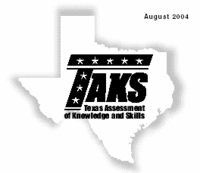• prefixes, suffixes
• root words
• decode unfamiliar words
• demonstrate understanding of basic sentence structure
• understand the meaning of syntax
• use context clues
• recognize supporting details
• understand what a selection or a portion of a selection is mainly about
• synonyms, antonyms
• main idea of a selection or a portion of a selection
• distinguish important details or specific facts that support the main idea of a selection
• retell the important events that occur in a selection
• distinguish narrative from expository text
• classify and categorize similar things or ideas in order to understand relationships set up by
the author
• use graphic organizers to organize information from a story or book
• answer different levels of questions based on grade-appropriate text, including test-like
comprehension questions
• distinguish a summary from main ideas and details
• summarize text to recall, inform, and organize ideas
• identify the most complete summary (short paragraph) from among several options
• represent summarized text information in a variety of ways, including outlines, notes,
• describe character feelings
• use synonyms for feeling words
• understand how the characters change by the things they experience in a story
• understand why the characters feel and act as they do in a story
• understand how the characters relate to one another in a story
• distinguish relationships between characters
timelines, and graphic organizers
• identify the author’s purpose (e.g., inform, entertain, persuade)
• understand that characters are people, animals, or make believe creatures that take place in the action of a story
• identify the characters in a story.
• describe character traits
• understand that character traits can be stated or shown by the character’s actions in a story
• define the setting of a story as the when and where a story takes place
• identify the time when the story takes place
• identify where the story takes place
• recognize why the time and location are important to a story
• identify places names, such as city, state, or country.
• identify the main problem in a story.
• recognize important events that occur in a story.
• identify that the characters in a story have a problem.
• recognize the beginning, middle and end of a story.
• clarify their mistakes that occur when reading
• read from a variety of genres
• read and think inferentially
• recognize that the author organizes events in a selection in the order in which they occur
• identify how the author uses clue words to show the time that the event happens or the order
in which things happen
• distinguish important ideas from less important details
• identify the author’s purpose for writing a specific selection
• represent text information in a variety of ways to show the order in which events takes place
in a narrative or expository selection
• identify the way the author has organized the text
• examine the graphic source to determine which information is represented and how it is
represented
• note the information that is required and locate it in the correct part of the graphic
• use the information to make an interpretation such as an inference or a conclusion
• be able to supply missing information in an incomplete graphic
• To represent text information graphically, students must be able to:
• identify the way the author has organized the text
• draw or select a graph, story map, chart, or other graphic that corresponds to the organizational scheme of the text
• label the graphic as appropriate
• post information from the text in the appropriate area of the graphic
• think about and set the purpose for reading
• preview or get an overview of the reading and some idea of what to expect
• figure out how long the reading is.
• develop an understanding of how it’s organized
• identify what the text is about

